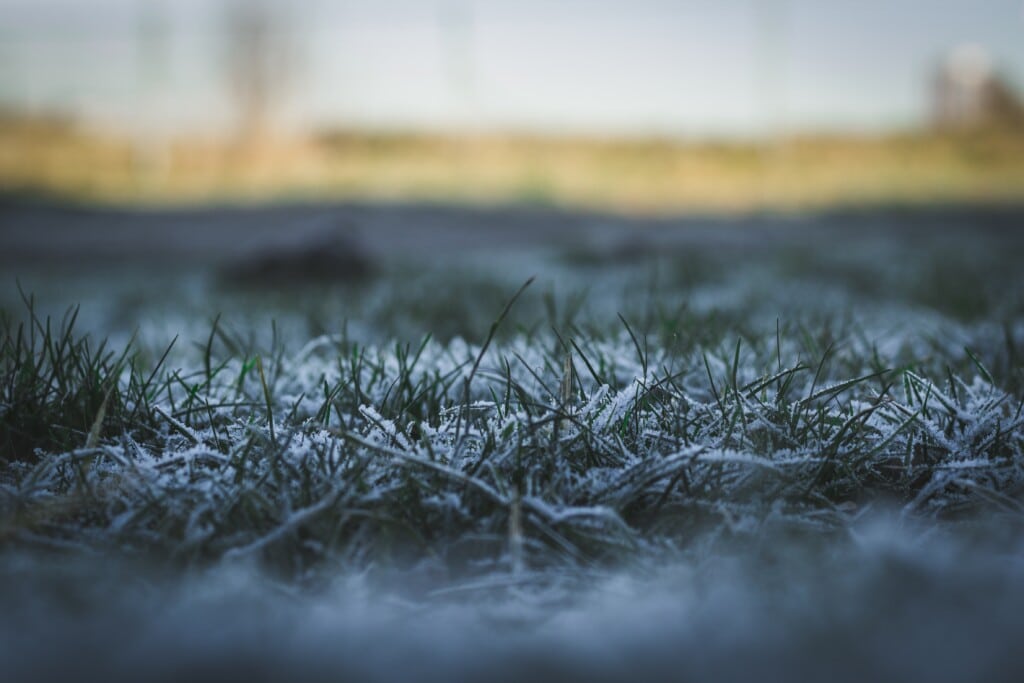
Fall has just officially started in B.C. and already parts of the province have seen snow and record low temperatures. The drop in the temperature means it’s a great time to start preparing and winterizing your turfgrass.
The turfgrass used for lawns in the Lower Mainland is typically made up of cool season grasses including Kentucky Bluegrass, Perennial Ryegrass, and Fescue. These grasses benefit from a fertilizer known as “winterizer” for the Winter.
During the Fall and Winter, the growth of grass stems and blades slow down while the root systems continue to grow until the winter freeze. During this time, grass roots continue to gather and store nutrients that will then be used to break dormancy in spring. When you use winterizer on your turfgrass in the Fall, it provides the grass with the ability to use the stored nutrients and become lush and green during the Spring.
In cooler weather, Chafer Beetle grubs are more active. By applying winterizer to your lawn, it helps promote continuous root production until the winter freeze. Although this won’t stop the Chafer Beetle grubs from eating away at the turf, it can help create denser root systems which can keep grub feeding low. Above ground, you’ll see a lush and green lawn instead of one with brown patches.
By preparing your turfgrass for the winter, you can help prevent winter kill from happening. Winter kill occurs when turfgrass dies due to icy conditions and cold weather. This happens when the turfgrass becomes trapped under ice sheets during the colder months.
It can also be caused by:
The Fall months are a perfect time to pick the right winterize to feed your lawn. That’s because autumn is feeding time for turfgrass.
Not all fertilizers are right for your lawn. Here at Western Turf Farms, we can help find the right winterizer.
When fertilizing your lawn, use a spreader to help distribute it evenly because as with irrigation, giving too much can be as harmful as too little.
Thatch or the dead matter such as leaves, shoots and stems, create a layer between the turfgrass and the environment. This can prevent air, water, and nutrients to get into the soil. Ultimately, making it hard for the grass sod to thrive.
When you aerate your lawn, this gives it the opportunity to uptake the necessary nutrients for it to stay healthy. You can use aeration poles or rent motorized aeration equipment. Using an aeration pole will help your turfgrass recover faster and be less of a workout. This is because while motorized aeration equipment can make the work faster, it is a lot heavier as well.
Sometimes, you’ll find patchy sections on your lawn. This can happen over time when the lawn doesn’t get enough water or fertilizer. To avoid uneven clumping of grass sections, control grass patches in moderation.
In the Fall, you need to set your mower about an inch higher than when you cut your lawn in the summer. Cutting the grass too short can create stress. For additional nutrients, leave the clippings. However, you’ll need to rake away clumps of thatch that can be too thick and prevent the lawn from breathing in the colder weather.
The cooler temperatures that have set in makes it the perfect time to prepare your lawn for winter. If this is taken care of now, your turfgrass will be lush and green by the time the Spring season comes around.
Have a question about how to care about your turfgrass for the winter? Contact us today!
Order fresh sod now or request a custom quote for your project.
Save with a Yearly membership. Custom fertilizer program. Fertilizer, topsoil, seed delivered to your door before you need it. Don’t forget, we will remember for you!
Western Turf Farms Abbotsford
39183 No.5 Road Abbotsford, BC V3G 2G3
Western Turf Farms Langley
7880 240 Street Langley, BC V1M 3P9
© Copyright 2025, all rights reserved by Western Turf Farms. By using our website you agree to our Disclaimer and Privacy Policy.